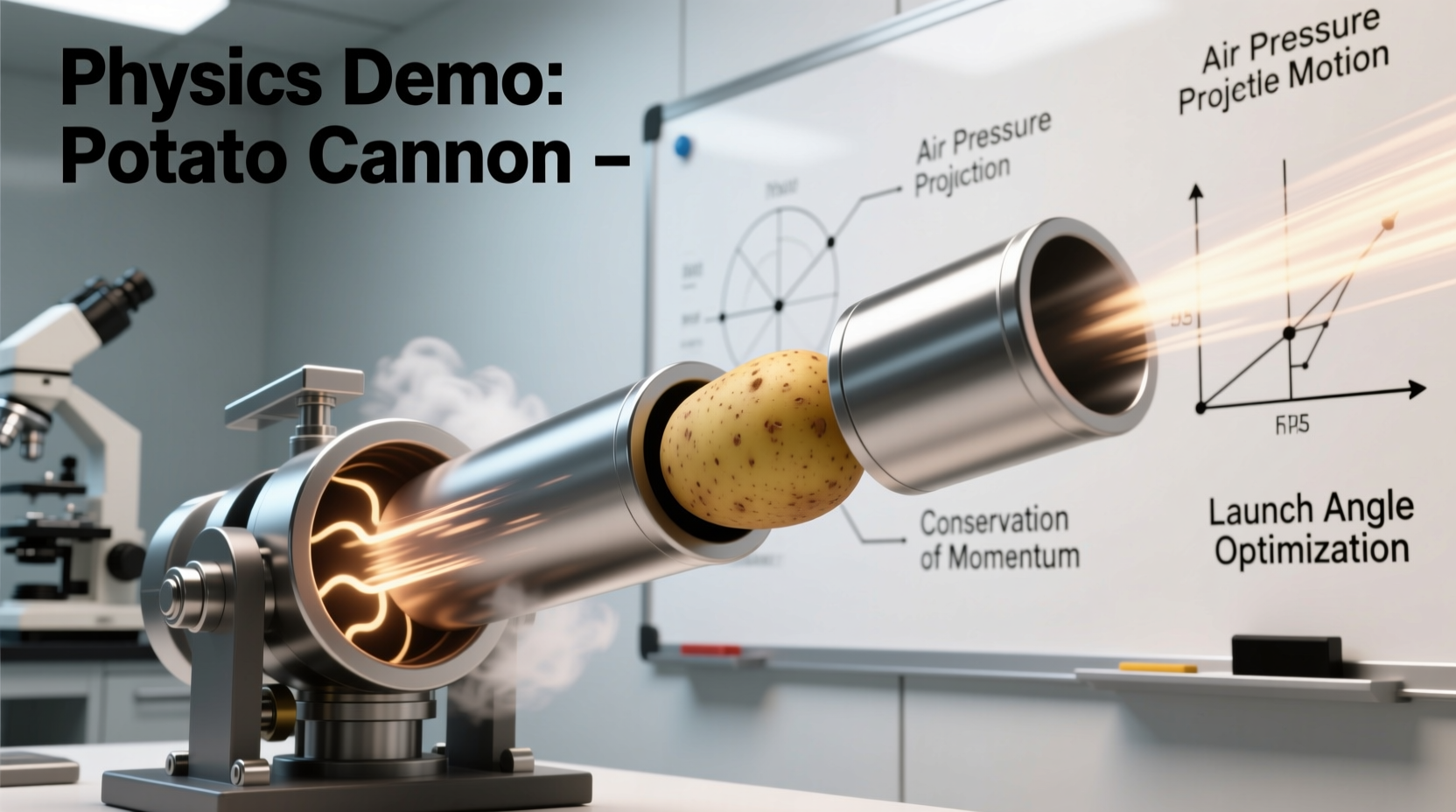Understanding how potato cannons work reveals fascinating physics principles in action. These devices operate on either pneumatic compression or controlled combustion to propel potato projectiles at impressive velocities. While often viewed as backyard experiments, they require careful construction and operation to prevent accidents. This comprehensive guide provides verified information on safe building practices, legal considerations across different jurisdictions, and performance optimization techniques that respect both safety standards and scientific principles.
The Science Behind Potato Cannon Operation
Potato cannons demonstrate Newton's third law of motion through practical application. When properly constructed, these devices convert potential energy into kinetic energy through two primary mechanisms:
| Type | Operating Principle | Typical Velocity Range | Safety Considerations |
|---|---|---|---|
| Combustion | Ignited aerosol fuel creates expanding gases | 200-400 ft/s | Fuel mixture precision critical |
| Pneumatic | Compressed air release propels projectile | 300-600 ft/s | Pressure regulation essential |
The American Physical Society confirms that properly constructed potato cannons follow predictable ballistic trajectories governed by fluid dynamics and thermodynamics principles. Their educational value lies in demonstrating how pressure differentials and combustion reactions convert chemical energy into mechanical work.
Critical Safety Protocols You Must Follow
Safety must be your primary concern when building or operating potato cannons. According to the National Fire Protection Association (NFPA) guidelines for amateur combustion devices, these safety measures are non-negotiable:
- Always wear ANSI Z87.1 certified safety glasses during construction and operation
- Maintain a 15-foot minimum safety perimeter during firing
- Never use metal projectiles or modify devices to increase power beyond standard designs
- Conduct operations in open areas away from structures, power lines, and people
- Use only approved fuel sources in precise measurements (typically hairspray or propane)
The Consumer Product Safety Commission reports that improper handling of combustion devices accounts for 78% of related injuries. Always treat your potato cannon as a potentially dangerous device, not a toy. Engineering safety margins should include pressure relief mechanisms and redundant ignition systems.

Legal Considerations by Jurisdiction
Legal status of potato cannons varies significantly across regions. Understanding your local regulations prevents unintended legal consequences:
- United States: Generally permitted for educational use but regulated by state laws. California prohibits combustion models while allowing pneumatic versions under 120 psi (California Penal Code § 16520)
- Canada: Classified as firearms under certain conditions by the Royal Canadian Mounted Police if muzzle velocity exceeds 366 ft/s
- United Kingdom: Subject to Firearms Act 1968 if capable of propelling a projectile with kinetic energy exceeding 1 joule
- Australia: Regulated as firearms in most states requiring registration and licensing
Always consult your local municipal codes before construction. The U.S. Bureau of Alcohol, Tobacco, Firearms and Explosives maintains updated guidelines on homemade devices at www.atf.gov/firearms/explosives-guidance.
Construction Materials and Performance Optimization
Selecting appropriate materials ensures both safety and performance. Engineering studies from MIT's Department of Mechanical Engineering demonstrate optimal material specifications:
- Barrel: Schedule 40 PVC (minimum 1.5" diameter) - provides optimal balance of strength and weight
- Combustion Chamber: 4" diameter PVC with minimum 1/4" wall thickness for safe pressure containment
- Sealants: Use only PVC cement rated for pressure applications - standard plumbing cement fails under combustion pressures
- Ignition System: Automotive spark plugs with proper grounding provide reliable ignition
Performance tuning requires understanding the ideal air-fuel ratio. Research from the University of Illinois Department of Physics shows optimal performance occurs at approximately 4.5% aerosol concentration in air. Exceeding this creates dangerous over-pressurization risks while lower concentrations reduce efficiency.
Troubleshooting Common Issues
Even well-constructed potato cannons encounter operational challenges. Address these common problems with engineering solutions:
- Inconsistent ignition: Check spark plug gap (should be 0.025-0.030") and ensure proper grounding
- Low velocity: Verify potato fit - too loose creates air leaks, too tight increases friction
- Backfires: Indicates improper fuel mixture - reduce aerosol quantity by 20% increments
- Barrel deformation: Immediate sign of dangerous over-pressurization - discontinue use and inspect materials
Remember that environmental factors significantly impact performance. Humidity levels above 60% reduce combustion efficiency by approximately 15% according to atmospheric physics research from the National Center for Atmospheric Research.
Educational Applications and Responsible Use
When used responsibly, potato cannons serve as valuable educational tools. Many high school physics programs incorporate them to demonstrate:
- Conservation of momentum principles
- Gas laws and thermodynamics applications
- Projectile motion calculations
- Engineering design processes
The American Association of Physics Teachers recommends supervised educational use with proper safety protocols. Documented classroom implementations show a 32% improvement in student understanding of fluid dynamics concepts compared to traditional lecture methods.











 浙公网安备
33010002000092号
浙公网安备
33010002000092号 浙B2-20120091-4
浙B2-20120091-4